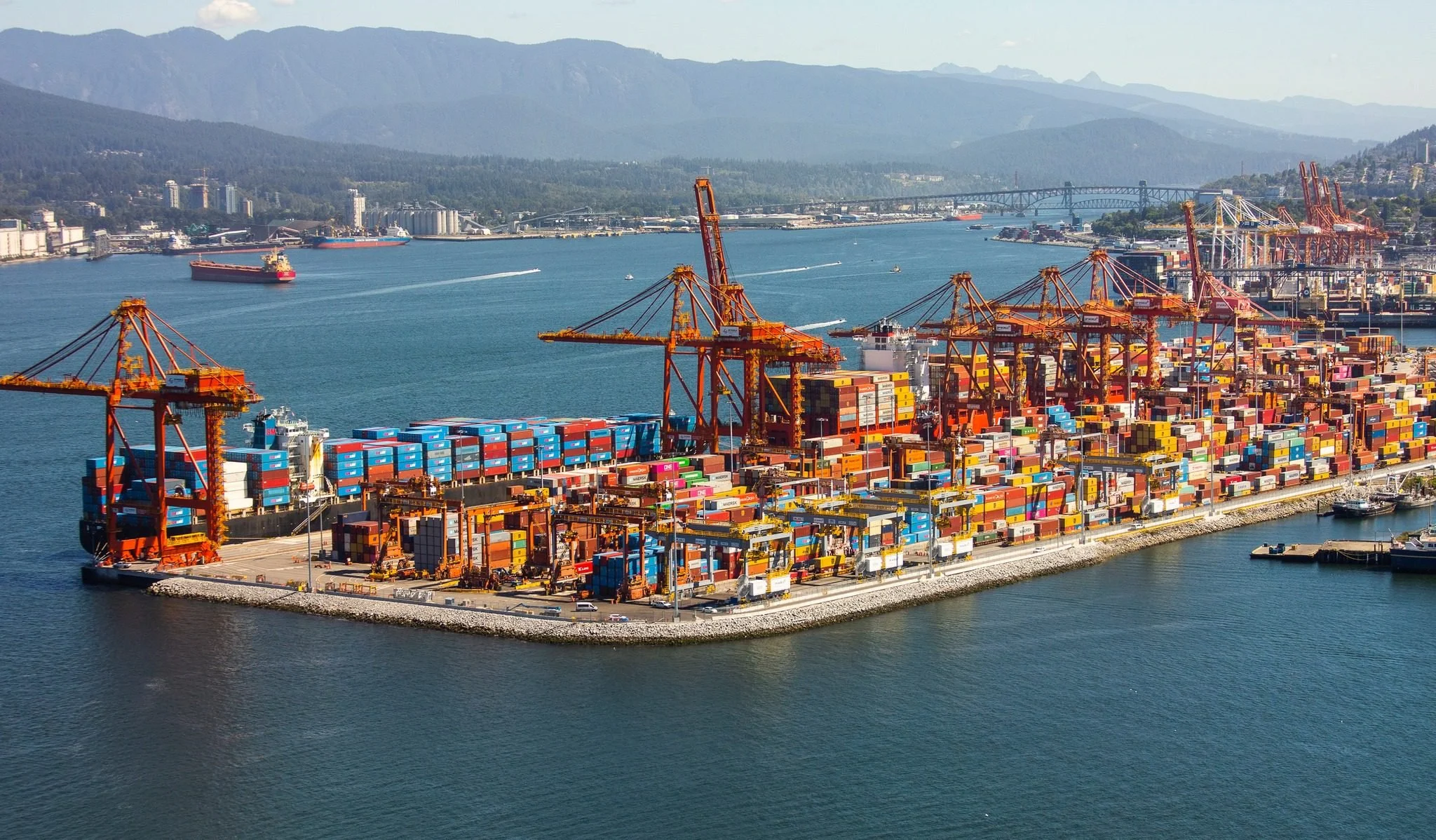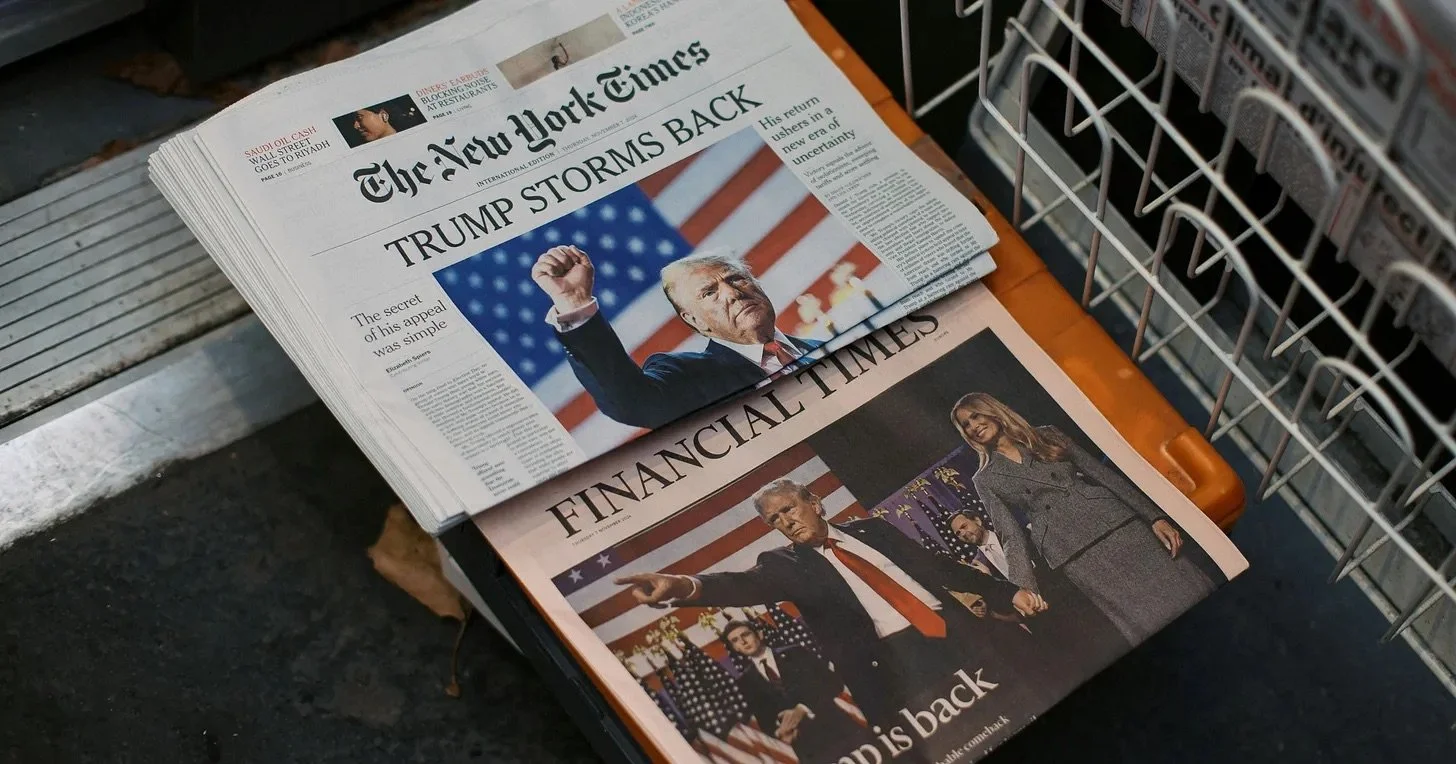Trump’s Tariffs: A New Trade War on the Horizon?
Vancouver, Canada shipping port
The Stage is Set
The global economy is bracing for impact as Donald Trump reopens his trade war playbook. Last week, the former president announced sweeping tariffs on imports from China, Canada, and Mexico, reigniting tensions between the U.S. and its largest trading partners.
Under his new executive order:
China now faces a 10% tariff on all imports to the U.S.
Canada and Mexico were set to be hit with 25% tariffs, but a last-minute deal paused these for 30 days while negotiations continue.
The "de minimis" trade loophole—which allowed duty-free imports under $800, benefiting fast-fashion giants like Shein and Temu—has been suspended (currently under re-review).
For Canada and Mexico, the reprieve is temporary. The clock is ticking, and in just 30 days, these tariffs could become reality. Meanwhile, companies and consumers are already grappling with the uncertainty of what comes next.
A Trade War Fueled by Politics, Not Just Economics
Trump’s reasoning? Fentanyl, border security, and economic nationalism. He claims that:
Canada and Mexico aren’t doing enough to curb fentanyl trafficking.
Tariffs will “bring jobs back to America” by forcing companies to reshore production.
China has “ripped off” the U.S. for too long, and tariffs will correct the trade imbalance.
But the reality is far more complex.
Less than 1% of fentanyl entering the U.S. comes from Canada.
Reshoring is not a quick fix—moving production back to North America is expensive and complicated.
Tariffs don’t just hurt foreign exporters—they raise costs for American businesses and consumers.
More than anything, this weaponized uncertainty is already disrupting global markets. Companies don’t know how long the tariffs will last, what goods will be affected next, or if Trump will escalate trade tensions with Europe.
Why This Trade War Hits Harder
This isn’t 2018. The world is still recovering from:
A sluggish post-pandemic economy
Rising inflation, forcing consumers to cut discretionary spending
A luxury market slowdown, where fashion and beauty brands are already struggling
And now, tariffs threaten to drive prices even higher.
For industries like fashion and beauty, which rely on global supply chains, the stakes are enormous. Higher import costs = higher retail prices, and in an era where consumer spending is already shrinking, this could spell disaster for brands, retailers, and manufacturers.
What’s Next?
In less than 30 days, Canada and Mexico must negotiate a long-term solution—but what does that even look like?
Will Canada retaliate with counter-tariffs on American goods?
Will brands shift supply chains yet again to avoid the new tariffs?
Will consumers be willing to absorb even higher prices on everyday goods?
This isn’t just about politics—it’s about your wallet, your job, and the future of global trade.
Stay tuned as we dive into the real economic consequences of this trade war, its impact on the fashion and beauty industries, and what’s at stake for Canada, Mexico, and international commerce.
Trump’s Tariff Playbook: What’s Really Happening?
Trade wars are never just about trade. Trump’s latest tariffs—10% on China, a pending 25% on Canada and Mexico—are as much about politics as they are about economics.
On the surface, his administration claims that these tariffs are a response to:
Fentanyl & border security – Pressuring Mexico and Canada to crack down on drug trafficking.
“Bringing jobs back to America” – Incentivizing companies to move production back to the U.S.
Correcting trade imbalances – Reducing reliance on foreign imports.
But when you look deeper, this trade war isn’t really about fentanyl, jobs, or even fair trade—it’s about leverage. Trump is using tariffs as a bargaining tool to force economic concessions from trading partners.
The Economic Fallout: Inflation, GDP Decline & Supply Chain Disruptions
Trump’s tariffs aren’t just political—they have real economic consequences that will ripple across industries and consumer wallets. From rising inflation to weakened GDP growth, these measures are set to make everyday goods more expensive and force companies to rethink how they do business.
The biggest issue? Uncertainty. Businesses don’t know how long these tariffs will last, whether they’ll be expanded, or how their supply chains will be affected. This kind of instability makes planning impossible, and in the world of trade, uncertainty is just as damaging as the tariffs themselves.
Tariffs drive inflation, increasing the costs of food, medicine, clothing, and cars.
GDP declines as businesses absorb costs, cut jobs, and scale down operations.
Supply chain disruptions force companies to rethink logistics, nearshoring, and global production models.
Fashion Takes a Hit…
The global fashion industry is already in survival mode. After years of economic turbulence, declining luxury sales, and shifting consumer habits, the last thing brands need is another financial hit. Yet, that’s exactly what Trump’s new tariffs on Canada, Mexico, and China threaten to deliver. Fashion is a low-margin, high-volume business, and tariffs will push up costs at every stage—from raw materials to manufacturing to retail. The industry relies on global sourcing and cross-border logistics, meaning price increases will ripple through luxury, fast fashion, mid-tier brands, and e-commerce platforms alike.
Luxury fashion isn’t recession-proof anymore. Over the past year, brands like Gucci, Burberry, and Balenciagahave posted negative growth, with North American demand weakening significantly. Meanwhile, Trump is threatening to slap tariffs on the EU, which would send prices for European luxury brands soaring in the U.S. and Canada.
If tariffs hit French, Italian, and British luxury houses, North American consumers could see 10–25% price increases on everything from Louis Vuitton handbags to Prada shoes.
This raises a fundamental question: Can luxury brands justify another round of price hikes, or will they finally hit a ceiling?
For years, luxury houses have banked on wealthy consumers absorbing higher prices, but there are signs that pricing power is slipping. With the U.S. economy slowing, high-end shoppers may start trading down, opting for accessible luxury brands over ultra-premium labels. If tariffs take hold, even affluent consumers might reconsider spending $3,000 on a bag that was $2,400 last year.
If brands push prices too high, they risk eroding demand in their most profitable markets.
Canadian Retailers: The Wild Card in This Trade War
Tariffs on Canada don’t just hurt U.S. consumers—they put Canadian fashion retailers in an impossible position.
Brands like Aritzia, Canada Goose, and Lululemon all have a strong U.S. presence but source products globally. If tariffs hit Canadian imports into the U.S., these retailers face tough choices:
Raise prices in U.S. stores (risking lost sales in their biggest growth market).
Absorb the cost (cutting into already-tight margins).
Shift production (expensive and slow).
For Canada Goose, which already charges a premium for Made-in-Canada craftsmanship, higher costs could dent profitability or force price increases that alienate customers.
Meanwhile, Aritzia, a Canadian success story with aggressive U.S. expansion plans, relies on international sourcing for its fashion-forward collections. If tariffs force price hikes, will American consumers still see Aritzia as an accessible premium brand—or just another overpriced retailer?
And then there’s Lululemon, a brand that thrives on premium pricing but mass-market appeal. It already sources materials and manufacturing globally, meaning tariffs could add friction to its supply chain, especially if the U.S. imposes duties on technical fabrics from China. Canadian brands have bet big on the U.S. market—but tariffs could change their entire retail strategy.
Montreal-based SSENSE has built a global reputation as a luxury-meets-streetwear e-commerce giant. But tariffs could disrupt its entire cross-border business model.
SSENSE imports luxury and designer goods from around the world, making its platform uniquely vulnerable to:
EU tariffs on luxury goods (if Trump escalates trade war with Europe).
Higher import costs for designer brands from China and Mexico.
Potential retaliatory Canadian tariffs on U.S. brands.
If the cost of importing European luxury, niche Japanese brands, and high-end streetwear spikes, does SSENSE absorb the hit, or pass it on to customers?
The platform thrives on pricing competitiveness, so even small price hikes could shift consumers toward direct purchases from brands or U.S.-based retailers.
Fast Fashion & Mid-Tier Brands: The Squeeze is On
Fast fashion relies on ultra-low-cost production, but tariffs break that model.
Shein, despite its rapid global expansion, depends on China’s supply chain efficiency—a 10% tariff makes its pricing advantage weaker.
Zara’s parent company, Inditex, has already signaled inventory cost pressures—tariffs will accelerate this.
H&M has been closing stores in key markets, with profit margins already under pressure.
For mid-tier brands like J.Crew, Everlane, and AllSaints, the risk is even greater. These brands can’t compete on price against fast fashion or on exclusivity against luxury. Their best bet is finding ways to differentiate through branding, quality, and ethical sourcing—but tariffs could erase whatever margin flexibility they have left. Retailers that can’t adjust quickly will be forced to shut stores, cut staff, or exit key markets altogether.
Trump’s tariffs aren’t just an economic play—they force fashion brands to rethink their entire pricing, sourcing, and distribution model.
Luxury brands face pricing ceilings as EU tariffs loom.
Canadian retailers must navigate U.S. expansion risks.
E-commerce platforms like SSENSE may struggle with cross-border costs.
Fast fashion and mid-tier brands have no pricing flexibility left.
Fashion is built on consumer confidence, affordability, and global trade efficiency. Tariffs threaten all three.
The question now: Will the industry adapt—or collapse under the pressure?
What’s Trump’s Endgame?
Trade wars don’t happen in a vacuum. They are strategic, calculated, and—at least in Trump’s case—highly political.
Is this really about border security and fentanyl?
Does Trump actually think tariffs will bring jobs back?
Or is this just a power play ahead of the U.S. election?
The truth is, it’s all of the above—but the real outcome is still unclear. What is clear, however, is that trade wars are messy, and no one really wins.
Final Thoughts: Where Do We Go From Here?
Canada is fighting back with $155B in counter-tariffs.
China is striking at U.S. energy & tech industries.
Mexico is strategically maneuvering to minimize damage.
The EU is preparing for a possible economic fight.
If Trump escalates, we could see a global economic shift where the U.S. loses its dominant position in trade. The next 30 days are critical. The question now is: Will Trump double down, or will global pressure force a retreat?
One thing is certain—this trade war is far from over.


